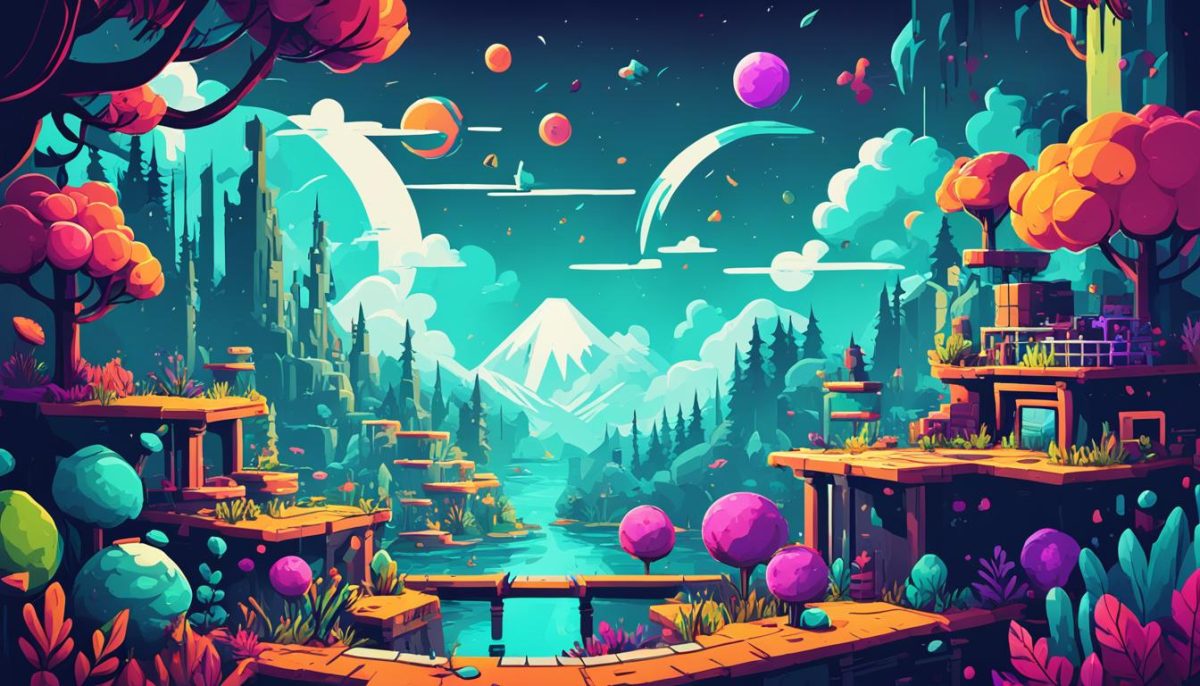Welcome, fellow gamers and curious minds! Today, we embark on an exciting journey into the world of indie games, where creativity knows no bounds and innovation thrives. But first, let’s address the burning question – what exactly is an indie game?
An indie game, short for independent game, is a video game developed by individuals or small teams without the financial or logistical support of a major publisher. These games are often born out of passion, driven by a desire to create something unique and meaningful, unrestricted by the boundaries of mainstream game development.
Indie games encompass a wide range of genres, from pixelated retro adventures to thought-provoking narrative-driven experiences. They offer a refreshing alternative to the blockbuster titles dominating the gaming landscape, presenting gamers with innovative gameplay mechanics, captivating narratives, and distinct art styles.
So why are indie games worth your time? Well, they provide a breath of fresh air, inviting you to explore uncharted territories and engage with game worlds that defy convention. With their creative freedom and unique perspectives, indie developers often push the boundaries of what’s possible, delivering memorable experiences that captivate and inspire.
Throughout this article, we’ll delve deeper into the origins and characteristics of indie games, exploring their impact on the gaming industry and speculating on what the future holds. So buckle up, grab your controller or keyboard, and join us on this enlightening adventure into the captivating realm of indie games!
The Origins of Indie Games
Let’s embark on a nostalgic journey as we delve into the fascinating history of indie games. The indie game movement, which began in the early 2000s, has revolutionized the gaming industry, challenging traditional game development norms and giving rise to a new breed of innovative and boundary-pushing titles.
The indie game movement emerged as a response to the growing dominance of big-budget AAA games. Independent developers, fueled by creativity and a desire for artistic freedom, sought to create games that reflected their unique visions and stories. These developers, often working with limited resources, embarked on a daring adventure of self-publishing and self-funding their projects.
As we explore the roots of indie games, it’s impossible to ignore the groundbreaking success of influential titles like “Braid” by Jonathan Blow and “Super Meat Boy” by Edmund McMillen and Tommy Refenes. These games, released in 2008 and 2010 respectively, captured the hearts of players worldwide and showcased the immense creative potential of indie game development.
“The indie game movement gained momentum as passionate developers sought to create games that broke free from the constraints of mainstream development. They embraced experimentation and artistic expression, resulting in a wave of unique and captivating gaming experiences.”
One of the defining characteristics of indie games is their emphasis on gameplay innovation and artistic expression. Unlike big-budget studios, indie developers have the freedom to take risks and explore unconventional ideas. This creative freedom has led to the birth of remarkable indie titles that have left a lasting impact on the gaming industry.
Indie games have also provided a platform for underrepresented voices in the gaming community. Developers from diverse backgrounds and marginalized communities have been able to share their stories, experiences, and perspectives through their games. This inclusivity and representation have enriched the gaming landscape, allowing for a more diverse and inclusive range of narratives.
Notable Indie Game Success Stories
Let’s take a moment to celebrate some of the most notable success stories in the indie game realm. These games have not only achieved critical acclaim but have also resonated with players on a profound level, capturing their imaginations and inspiring a new generation of indie developers.
| Game | Developer | Release Year |
|---|---|---|
| Stardew Valley | ConcernedApe | 2016 |
| Undertale | Toby Fox | 2015 |
| Cuphead | Studio MDHR | 2017 |
| Celeste | Matt Makes Games | 2018 |
| Untitled Goose Game | House House | 2019 |
These games have captured the hearts of millions of players, proving that indie games can rival mainstream titles in terms of quality, creativity, and emotional impact. Their success highlights the power of independent storytelling and the endless possibilities that indie game development holds.

Characteristics of Indie Games
Indie games are known for their unique and distinctive features that set them apart from mainstream titles. These qualities contribute to the appeal and allure of indie games, making them a popular choice among gamers seeking something different and refreshing.
The Creative Freedom of Indie Developers
One of the standout characteristics of indie games is the creative freedom enjoyed by their developers. Without the constraints imposed by large studios and publishers, indie developers have the liberty to experiment with innovative gameplay mechanics, art styles, and storytelling techniques. This freedom often results in indie games that push boundaries and challenge conventional gaming norms.
Innovative Gameplay Mechanics
Indie games are known for their ability to introduce fresh and inventive gameplay mechanics. From puzzle-solving in “Braid” to procedural generation in “Spelunky,” indie games often bring new twists to familiar genres, keeping players engaged and entertained. The indie game scene is a hotbed of innovation, where developers are constantly pushing the boundaries of what games can do.
Unique Art Styles
The aesthetic appeal of indie games is one of their most captivating qualities. With their distinct art styles ranging from pixel art to hand-drawn illustrations, indie games create visually stunning worlds that are a feast for the eyes. Each indie game has its own artistic identity, reflecting the vision and creativity of its developers.
Captivating Narratives
Indie games often excel at delivering immersive and thought-provoking narratives. These games explore complex themes and offer rich storytelling experiences that leave a lasting impact on players. From emotionally charged tales in “Gris” to existential exploration in “Inside,” indie games demonstrate that impactful storytelling is not limited to big-budget productions.
These are just a few of the characteristics that define indie games and contribute to their enduring popularity. As players continue to seek unique experiences and creative innovation, the world of indie games will continue to thrive and surprise us with its remarkable qualities.

The Impact and Future of Indie Games
Indie games have undeniably left their mark on the gaming industry, disrupting the status quo and paving the way for unique experiences. These innovative titles have not only influenced mainstream game development but also captivated audiences worldwide.
With their refreshing gameplay mechanics, distinct art styles, and captivating narratives, indie games have brought a breath of fresh air to a market saturated with big-budget productions. Their influence on the indie game industry has been tremendous, inspiring a new generation of developers to create their own visions and push the boundaries of what is possible.
But what does the future hold for indie games? As technology continues to advance and gamers hunger for new and exciting experiences, the indie game scene is poised to flourish. The future of indie games is bright, with countless opportunities for growth and innovation.
As indie developers gain more recognition and support, we can expect an even wider variety of indie titles to emerge, covering genres and themes that have yet to be explored. The future of indie games will be characterized by diversity, with unique voices and perspectives shaping the gaming landscape.

